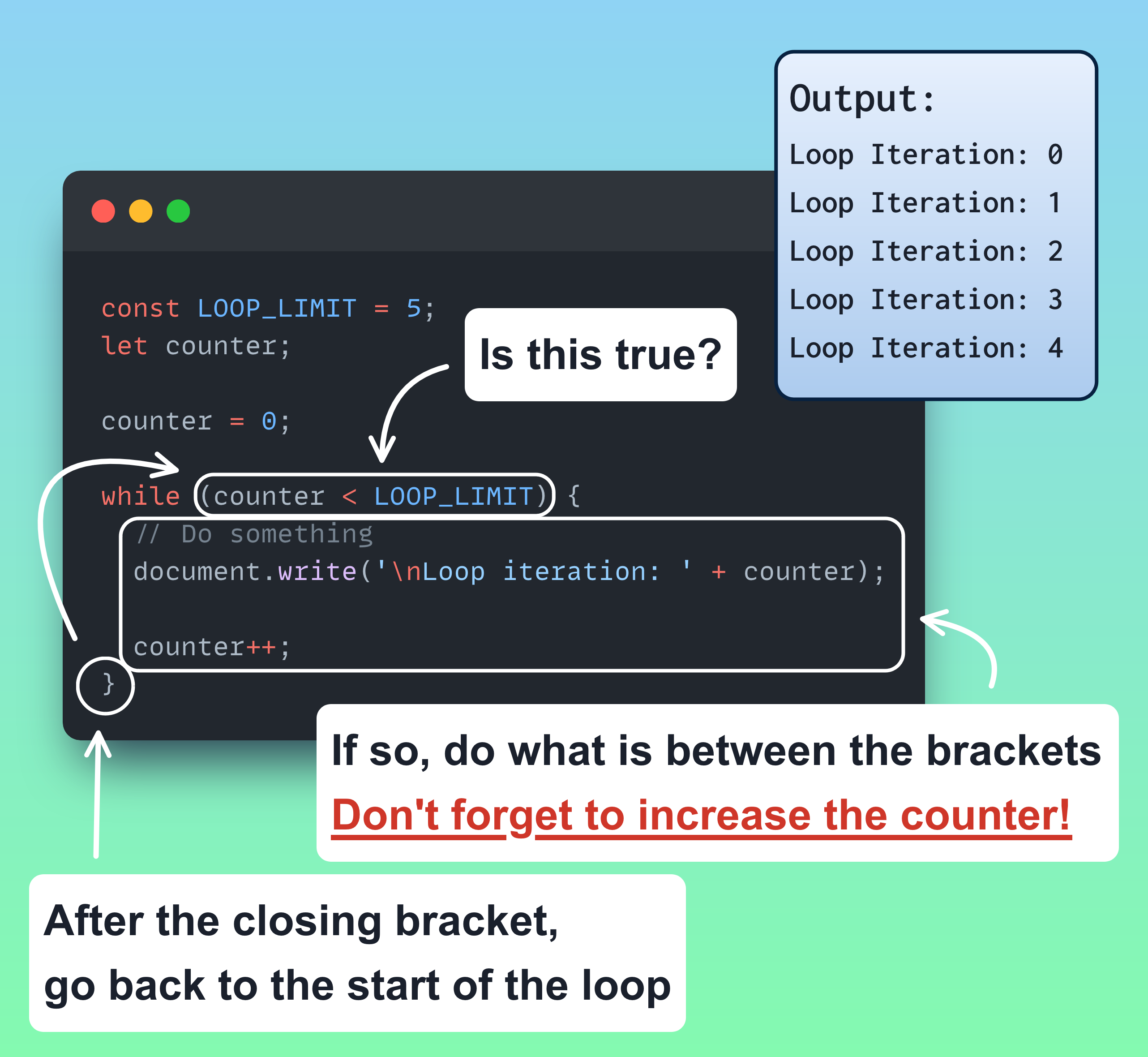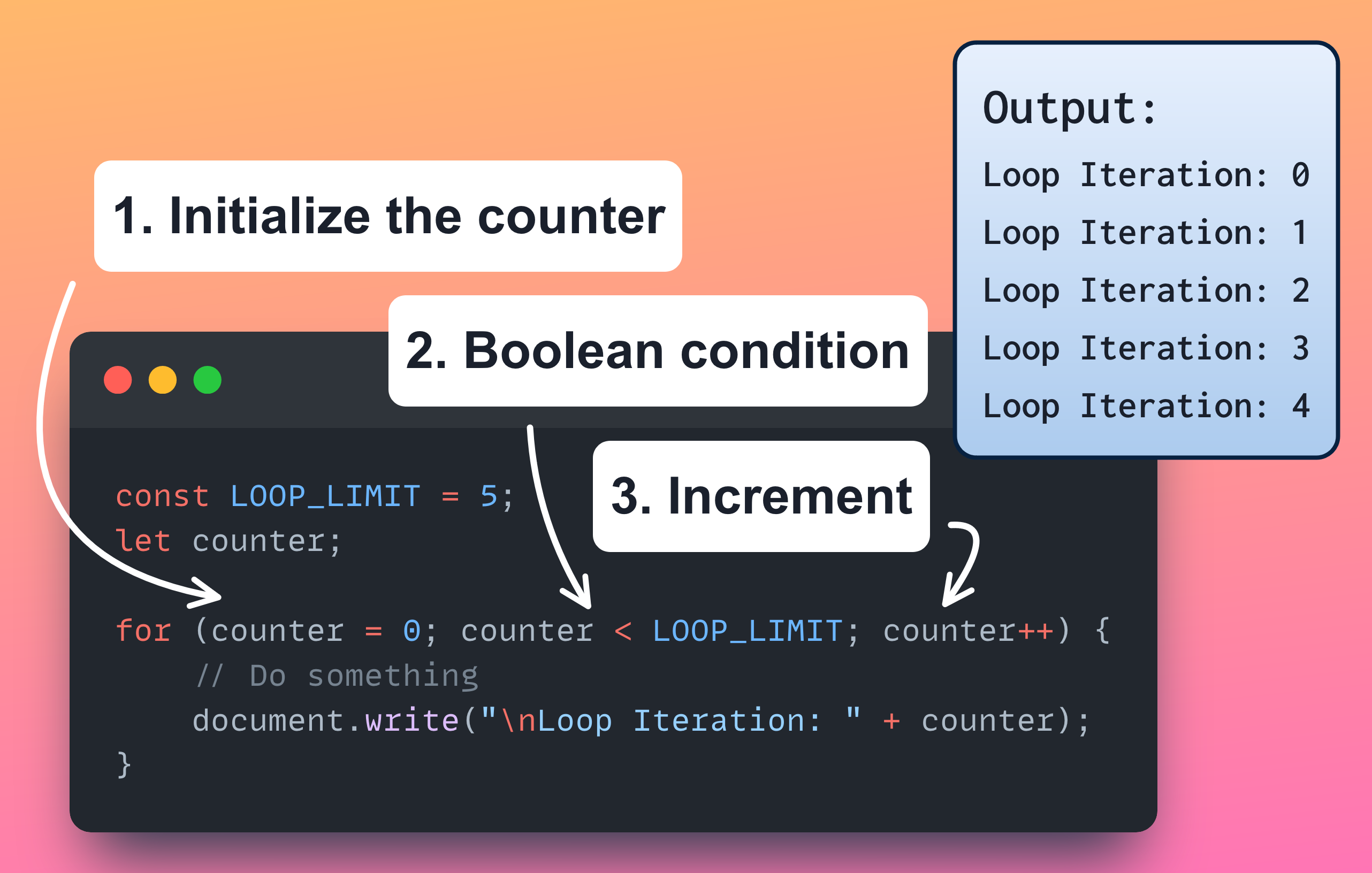Repetition
Repetition means Looping¶
In programming we always use a loop when we want our program to repeat something.
Question
What if you want to have a piece of code that does the same thing 5 times?
1 2 3 4 5 6 7 | |
Not very efficient!
Thankfully, we have loops!¶
1 2 3 4 5 6 7 8 9 10 11 12 13 14 15 16 17 18 19 20 21 22 23 | |
** Click me to run nonMagic() **
Note: Refresh the page to return to the course content
Steps of a Loop¶
- The condition is evaluated.
- If the condition is
true, the code within the loop runs - The program goes back the check the condition again.
- This repeats over and over again, until the condition is
false

Demo
- Demo: Basic Looping
- unit04/demos/demo-looping.html
Looping Structures¶
We have two main looping structures that we're going to learn in this course.
- Leading Decision Loop
- Counted Loop
Leading Decision Loop¶
Make the decision first.
1 2 3 4 5 | |
-
The condition is tested first, before the code inside the loop is run. If the condition is true then the code is run.
-
After all the statements in the loop are run then the condition is tested again. If it is still true then the code in the loop is run again.
-
Then the condition is tested again until it is false.
Counted Loop¶
The concept of counted looping is simple, you do something a specified number of times.
New Coding Standard
Much like the if statement, spacing is important for readability
while Loop¶
1 2 3 4 5 6 7 8 9 10 11 12 13 14 15 16 17 18 | |
-
We create a variable and initialize it to 0.
-
We start the loop by testing our variable against the number of times we want to loop. In this case we want to loop 10 times.
-
Then we run the statement block, this will be our working code.
-
At the end of the loop we have to add 1 to our "counter" variable. If this step is forgotten our loop will run forever.
-
But, this is not most common use of the
whileloop in programming. It is better suited for loops where we don't know how many times it's going to run. For a counted loop in JavaScript we usually use this:
New Coding Standard
Much like the if statement, spacing is important for readability
for Loop¶
1 2 3 4 5 6 7 8 9 10 11 | |
-
This does exactly the same thing as the previous
whileloop. However, managing the loop counter is built in, you can't forget to have the counter variable or it won't run. -
This loop is more concise and is preferred when we know how many times a loop should be run.
-
The
forhas three parts in between the parentheses, initialization, test, increment.

1. First the counter variable is set to zero. This happens only once before the loops starts.
for (counter = 0; counter < LOOP_LIMIT; counter++) {
2. This middle part is the test, it's just the same as inside a while loops parentheses.
for (counter = 0; counter < LOOP_LIMIT; counter++) {
3. At the end is the increment step. This is run after the loop statements are run.
for (counter = 0; counter < LOOP_LIMIT; counter++) {
The best writing is rewriting. -E. B. White
Labs
- Lab01: Your First While Loop
- unit04/labs/lab-01-first-while.html
- Lab02: Your First For Loop
- unit04/labs/lab-02/first-for.html